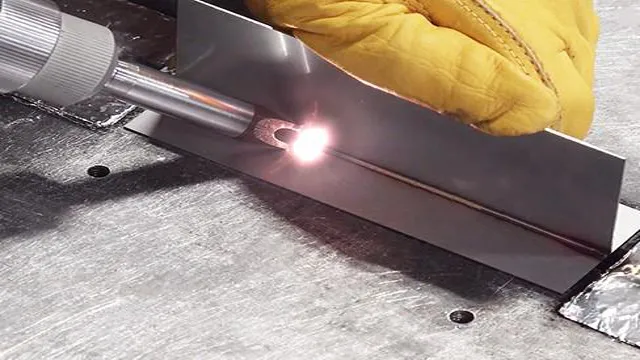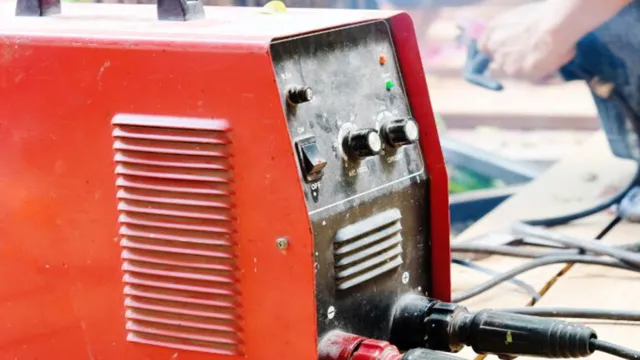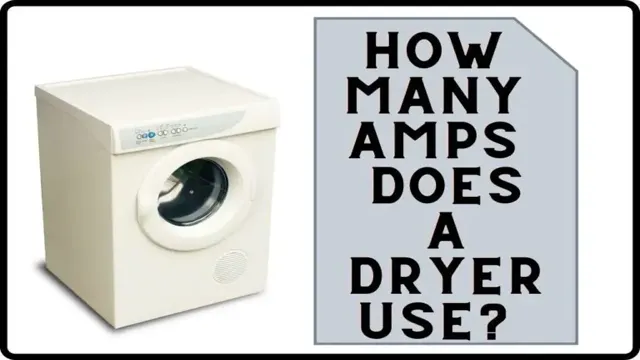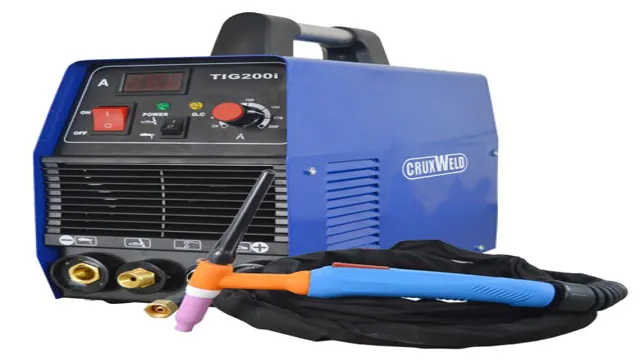What is Arc Force on a Welding Machine and How It Affects Your Welding Process?
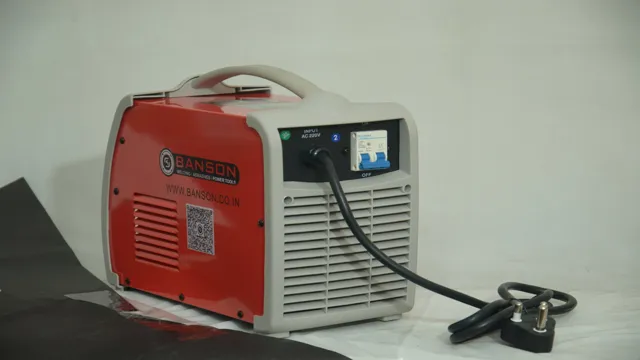
If you’re new to welding, you might have heard of the term “arc force” and wondered what it means. Simply put, arc force is the amount of pressure or force that is applied to the arc of a welding machine. But why is it important to understand arc force, and how can it affect your welding results? In this blog post, we’ll dive into the specifics of arc force and explore how it can impact your welding experience.
So, grab your welding helmet and let’s get started!
What is Arc Force?
Arc force is an important feature found on welding machines that helps to regulate the welding process. Essentially, it controls the force between the welding electrode and the workpiece, ensuring a stable and consistent arc. When welding, the arc can become unstable and cause the electrode to stick to the workpiece, resulting in an uneven and messy weld.
Arc force works by automatically increasing the amperage output of the welding machine to prevent this from happening. This can help to maintain a steady arc, produce a smoother and cleaner weld, and reduce the chance of defects and flaws. So, if you are looking to improve your welding skills, make sure to understand the importance of arc force on a welding machine and utilize it to your advantage.
Defining the Term
When it comes to welding, Arc Force is a term that is frequently thrown around. But what exactly does it mean? In simple terms, Arc Force refers to the amount of amperage being used to maintain a stable arc between the electrode and the base metal. It essentially controls the length and strength of the arc, which in turn affects the amount of heat and penetration being applied to the metal.
Think of it like a gas pedal on a car – the more you press down, the faster you go. Similarly, the more you adjust Arc Force, the more power you apply to the arc. This can be particularly useful when welding in awkward positions or dealing with rusty or contaminated metal.
By increasing the Arc Force, you can maintain a consistent arc, ensuring a strong and even weld.
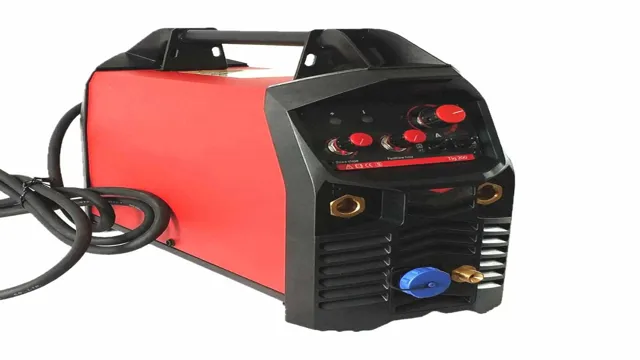
How Does Arc Force Work?
Arc force is a feature found in many welding machines that helps regulate the arc length during welding. Essentially, it controls the amount of current that is transferred to the welding wire or electrode, which in turn affects the heat and penetration of the weld. The higher the arc force, the more current is transferred, resulting in a more intense and powerful arc.
This can be helpful when welding thicker materials or when working with certain types of electrodes that require greater heat input. On the other hand, a lower arc force can result in a softer, more controlled arc that is better suited for thinner materials or more precise welds. Overall, arc force is an important tool for welders to help them achieve the right balance of heat and penetration for each weld they perform.
Why is Arc Force Important?
Arc force is a term used to describe the power output of a welding machine when the arc length changes. Essentially, arc force is the ability of the machine to maintain a stable arc while welding. When the distance between the tip of the electrode and the surface of the metal being welded changes, the level of arc force will also change.
This can have a significant impact on the quality of the weld. If the arc force is too high, it can create too much heat and burn through the metal. If it is too low, the weld may not penetrate deeply enough into the metal.
Having the right level of arc force is crucial for creating high-quality welds that are strong and durable. By adjusting the settings on the welding machine, welders can ensure that they have the right level of arc force for each job they undertake.
Benefits of Arc Force
Arc force is crucial in the welding industry and offers several benefits to welders. It facilitates a stable welding arc by keeping the weld pool consistent. This is essential for producing high-quality welds.
Arc force helps to prevent the electrode from sticking to the workpiece, which can be a common problem when welding with low currents. It also enhances the efficiency of the welding process by ensuring that the electrode melts evenly and quickly, reducing the risk of underfilling and undercutting. Additionally, arc force reduces spatter and improves weld bead appearance.
Overall, the benefits of arc force cannot be overstated, as it ensures that welds are consistent, efficient, and of high quality. Therefore, it is essential for welders to understand arc force and its importance in welding.
Impacts on Welding Quality
Arc force is a critical aspect of welding quality that impacts the final product. In simple terms, arc force refers to the force that acts on the electrode during the welding process. The stronger the arc force, the more it pushes the electrode towards the workpiece, resulting in deeper penetration and stronger welds.
However, too much arc force can damage the electrode and lead to spatter and porosity in the weld. This is why it is essential to find the right balance of arc force that will deliver the desired penetration and weld quality without compromising the electrode or creating defects. So, why is arc force so important? Well, it can make the difference between a weak and a robust weld, which ultimately affects the performance, safety, and durability of the final product.
Therefore, welders must understand how arc force works and how to control it to achieve high-quality welds that meet the industry standards and customer expectations.
Potential Risks of Not Using Arc Force
Arc Force Arc Force is a crucial feature in welding. It helps in maintaining the quality of the weld and protecting the welding machine. Without proper Arc Force, weld quality may be affected, and it can cause the machine to overheat quickly.
Additionally, inadequate Arc Force can lead to weld spatter or a lack of penetration, which can affect the strength and durability of the weld. Not using Arc Force can also increase the risk of electric shock, which can pose a danger to the welder’s wellbeing. Therefore, it is essential to use Arc Force during welding to maintain the quality of the weld and ensure the safety of the welder.
How to Adjust Arc Force on a Welding Machine
Arc force is a term used in welding that refers to the intensity of the welding arc. Essentially, it is the amount of pressure that the welding machine uses to keep the arc stable and prevent spatter. This pressure can be adjusted on most welding machines, and it can greatly affect the quality of your welds.
Typically, lower arc force settings will produce smoother, more controlled welds, while higher arc force settings will produce more spatter and a rougher finish. Adjusting arc force can be a great way to fine-tune your welding process and get the results you want. So, what is arc force on a welding machine? It’s a simple but important concept that can make a big difference in your welding.
Variables to Consider
When it comes to adjusting arc force on a welding machine, there are a few variables to consider. Firstly, the type of electrode being used will affect how much arc force is needed. For example, if you’re using a thicker electrode, you may need more arc force to keep the puddle from getting too big.
Secondly, the thickness of the metal you’re welding will play a role in how much arc force you need. Thicker metal requires more force to maintain a stable arc. Additionally, the position in which you’re welding will also affect the amount of arc force you need.
For example, overhead welding requires less arc force than vertical or horizontal welding. Lastly, your personal welding style can also play a role in determining how much arc force you need. Some welders prefer more force, while others use less.
By taking all of these variables into consideration, you can adjust the arc force on your welding machine to achieve the desired weld quality.
Step-by-Step Guide
Adjusting the arc force on a welding machine is crucial to producing high-quality welds. This setting controls the amount of current that is used during the welding process, and it can have a significant impact on the final results. To adjust arc force on a welding machine, start by locating the control knobs on your machine.
There should be a knob labeled “arc force” or “dig” which controls this setting. Turn the knob clockwise to increase the arc force and counterclockwise to decrease it. It’s important to make small adjustments and test the welds to see how each change affects the final result.
Depending on the type of machine you have, you may need to consult the user manual or reach out to the manufacturer for specific instructions. Overall, adjusting the arc force is an essential step in producing high-quality welds, and with practice, you’ll be able to fine-tune this setting to achieve the perfect weld.
Conclusion
In conclusion, arc force on a welding machine is like having a personal trainer for your welding process. It helps maintain a consistent and stable arc by boosting the current when necessary, just like how a personal trainer pushes you to lift heavier weights for stronger muscles. The result is a better, stronger welding joint and a better welding overall experience for you.
So, next time you hear the term “arc force,” remember that it’s your welding machine’s personal trainer, helping you achieve your welding goals.”
FAQs
1. What is arc force and how does it affect welding quality? Arc force is a feature on welding machines that controls the electrical current and voltage in the welding arc. It is used to regulate the arc length and prevent stick welding. When set correctly, arc force can improve the quality and consistency of welds. 2. What are the benefits of using arc force in welding? Arc force helps to stabilize the welding arc, regulate the penetration depth, and prevent the electrode from sticking to the workpiece. This results in a stronger, more consistent weld with less spatter and porosity. 3. How does the arc force setting vary depending on the welding process and materials? The optimal arc force setting can vary depending on the welding process (MIG, TIG, Stick, etc.) and the type of materials being welded (steel, aluminum, etc.). Factors such as welding position, joint design, and welding current also play a role in determining the best arc force setting. 4. Can arc force be adjusted during welding or does it need to be set beforehand? Some welding machines allow for arc force to be adjusted while welding, while others require it to be set beforehand. It is important to consult the user manual for your specific welding machine to determine the appropriate settings and procedures. 5. What are some common issues that can arise when using arc force, and how can they be resolved? Common issues when using arc force include excessive spatter, inconsistent weld quality, and electrode sticking. These can be resolved by adjusting the arc force setting, cleaning the workpiece and electrode, and properly selecting and preparing the welding materials. 6. Is arc force necessary for all welding applications? Arc force is not always necessary for all types of welding applications, but it can be a useful feature for improving welding quality and consistency. It is important to consider the specific requirements and materials of each welding job when deciding whether or not to use arc force. 7. Can arc force be used with automated welding systems? Yes, arc force can be used with automated welding systems to improve welding quality and consistency. However, it is important to ensure that the automated system is properly programmed with the correct arc force settings for each welding application.

